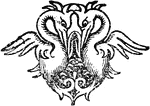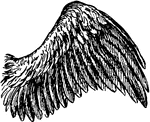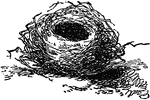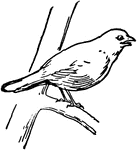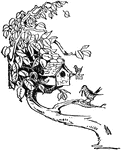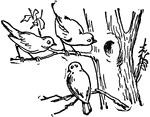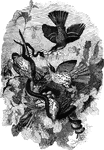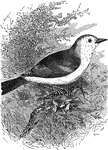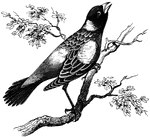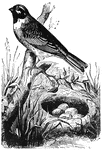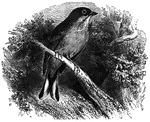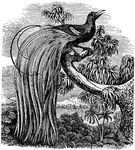
The Bird of Paradise
The Bird of Paradise is the common name of a family of birds, Paradiseide of ornithologists, found chiefly…
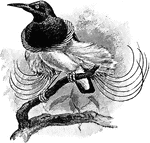
Twelve-Wired Bird of Paradise
The Twelve-Wired Bird of Paradise (Seleucidis melanoleucus) is a black and yellow bird of paradise named…
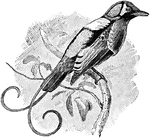
Wilson's Bird of Paradise
Cicinnurus respublica: a species of Bird of Paradise in the subgenus Diphyllodes.

Bird Skeleton
Skeleton of a bird. 1: The head. 2: Cervical Vertebrae. 3: Dorsal and lumbar vertebrae. 4: Scapula.…
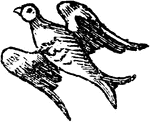
Bird Volant
"VOLANT. The French word for flying. It is used in Heraldry to express the same action." -Hall, 1862
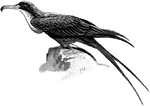
Frigate Bird
"The Frigate pr Mana-of-War-Bird... is met throughout the tropical regions, breeds in Laysan and has…

Labeled bird
"When a new bird is seen, the observer should write an accurate description of it in his notebook, giving…

Leg of Bird
This illustration shows the leg of a bird. P. Pelvis, FE. Femur, TI. Tibia, FI. Fibula, TA. Tarsus,…
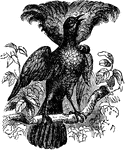
Promerops Superba Bird
" A genus of insessorial birds many of which are remarkable for the beauty of their plumage. They have…
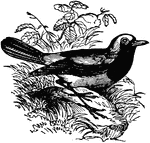
Redstart Bird
A bird belonging to the family Sylviadae, nearly allied to the nearest, but having a more slender form…
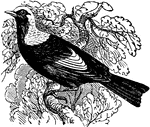
Regent Bird
A very beautiful bird of Australia, belonging to the family Meliphagidae or honey-eaters. The color…

Secretary Bird
"Standing some four feet high on very long legs, this bird (Secretary Bird) gives the impression of…

Tropic Bird Sitting on a Ledge
The Tropic Bird " are chiefly found in the tropical regions of the south; ... this species breeds as…
Wing of Bird
"Shows how the bones of the arm (a), forearm (b), and hand (c), are twisted, and form a conical screw."—Pettigrew,…

Bird-Tracks
"Footprints resembling those birds are found on red argillaceous sandstones in the valley of Connecticut…
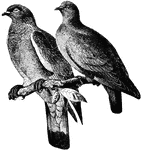
Birds
An illustration of two birds. On the left side is a European wood pigeon and on the right is a stock-dove.
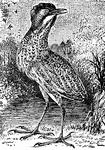
Bittern
"The bitterns are distinguished from the herons proper, besides other characteristics, by having the…
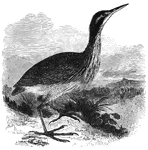
American Bittern
Measuring approximately twenty-six inches in length, the American bittern is a nocturnal hunter. It…
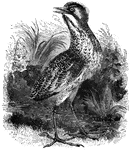
Common Bittern
The common bittern of Europe feeds at night, primarily on frogs, lizards, small birds, and fish.
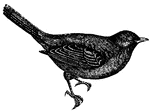
Blackbird
The blackbird is shy and artful by nature, and shows extreme caution in approaching any object of suspicion.
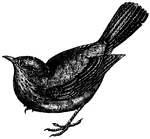
Blackbird
The blackbird is shy and artful by nature, and shows extreme caution in approaching any object of suspicion.
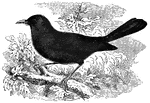
Blackbird
Black with a yellow bill, the blackbird feeds mostly on larvae, snails, worms, insects, and fruits.
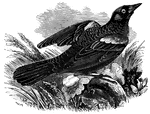
Red-Winged Blackbird
Also known as the red-winged oriole, the red-winged blackbird is known for gathering in immense flocks,…
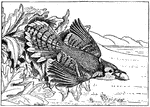
Blue Jay
The Blue Jay (Cyanocitta cristata) is a passerine bird, and a member of the family Corvidae native to…

American Blue Jay
"The American Blue Jay is a beautiful bird that is common near all sections of the United States, from…
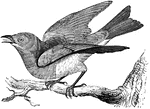
Bluebird
The bluebird feeds on a diet of insects and spiders in the summer and berries in the winter. It usually…
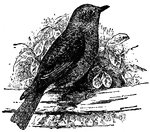
Bluebird
The bluebird eats caterpillars, cutworms, grasshoppers, and wild fruit, especially berries.
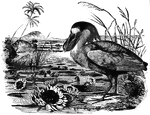
Boatbill
Also known as the crested savacou, the boat-bill gets its name from the shape of its beak, which resembles…

Bobolink (Female)
The Bobolink, Dolichonyx oryzivorus, is a small New World blackbird and the only member of genus Dolichonyx.…
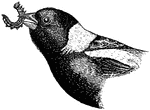
Bobolink (Male)
The Bobolink, Dolichonyx oryzivorus, is a small New World blackbird and the only member of genus Dolichonyx.…
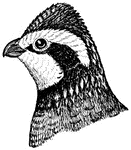
Northern Bobwhite
The Northern Bobwhite, Virginia Quail or (in its home range) Bobwhite Quail (Colinus virginianus) is…
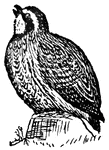
Northern Bobwhite
The Northern Bobwhite, Virginia Quail or (in its home range) Bobwhite Quail (Colinus virginianus) is…
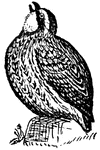
Northern Bobwhite
The Northern Bobwhite, Virginia Quail or (in its home range) Bobwhite Quail (Colinus virginianus) is…
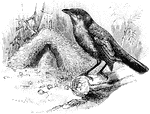
Vogelkop Bowerbird
The Vogelkop Bowerbird (Amblyornis inornata) is a bird in the Ptilonorhynchidae family of bowerbirds…
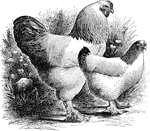
Pair of Light Brahmas
A pair of brahmas, whose base color is white with black hackles edged in white, with a black tail.
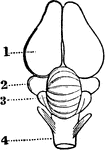
Brain of a Bird
In birds the hemispheres are not united as in humans; the cerebellum is proportionately larger than…
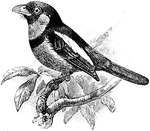
Black-and-Red Broadbill
The black-and-red broadbill (Cymbirhynchus macrorhynchos) is a bird in the Eurylaimidae family also…

Footprint of brontozoum giganteum
A footprint of brontozoum giganeum, a now extinct relative of the cassowary. This example is eighteen…
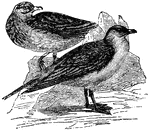
Buffon's Skua
"The Skua, or Dung-bird, is remarkable for its stout bill, which is nearly cylindrical. They fly very…

Cirl Bunting
Buntings build their nests on the ground, or on low bushes, and in this deposit four or five eggs, (Figuier,…
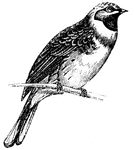
Cirl Bunting
Buntings build their nests on the ground, or on low bushes, and in this deposit four or five eggs, (Figuier,…

Ortolan Bunting
The Orlotan buntings are very shy; still great numbers are captured in nets, when they are kept in confinement,…

Reed Bunting
Buntings build their nests on the ground, or on low bushes, and in this deposit four or five eggs, (Figuier,…
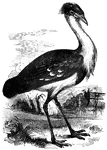
Black-Billed Bustard
Found in India, the black-billed bustard can measure up to four and a half feet in length.
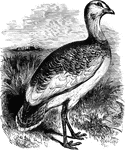
Great Bustard
Forty-five inches in length, the great bustard feeds on green wheat, grapes, trefoil, and other vegetable…
